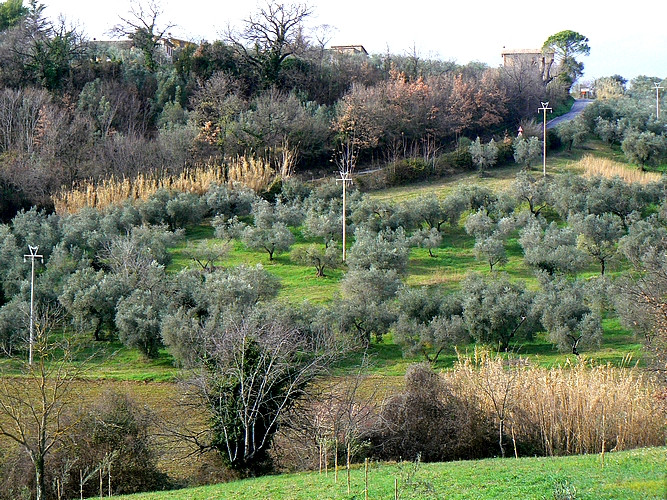In Canneto (Municipality of Fara Sabina) one of the oldest olive trees in Europe survives: the so-called "Big olive tree" (Olivone), dated around 1500 years, a symbol of an even older productive vocation: the Sabina’s extra virgin olive oil,
defined by the Roman physician Galen as the best in the known world. The area is located near the site of the ancient Sabine city of Cures, a formerly flourishing center long before the Romans age, where in the eighth century. B.C. the olive tree was yet cultivated for food. Actually, this area was the first historical extensive olive cultivation district completely enslaved to a large market like the one in the nearby city of Rome. The reason is essentially the climate, ideally dry for olive tree growth and production, Fara Sabina is located on top of a mountain ridge called Monte degli Elci, that is definetely exposed southward to the mild winds coming from the Tiber Valley. The substrate ass well is very important: The rocks of these mountains are limestones, and they generate a very shallow and drained soil that leads to particularly soil dryness conditions. This environmental conditions are confermed by the natural vegetation that recalls almost perfectly the one that is found on the see coastline. Olive trees are cultivated with various methods to maximise land exploitment also in harsh conditions, for example on dry stone terraces. In lower heights many century old, or even milleniary olive trees can be found, often mixed with citrus trees, that are a further sign of the particularly mild climate of this area, although, these trees, in order to grow well and stay protected by frosts, are found planted only adjacent to houses external walls. The olive growing world developed, over the centuries, first under the control of the nearby Imperial Abbey of Farfa and then again, during the rule of the Popes, forming a characteristic landscape, which still shows traces of a glorious past.
DOES THIS PLACE INSPIRE YOU?














